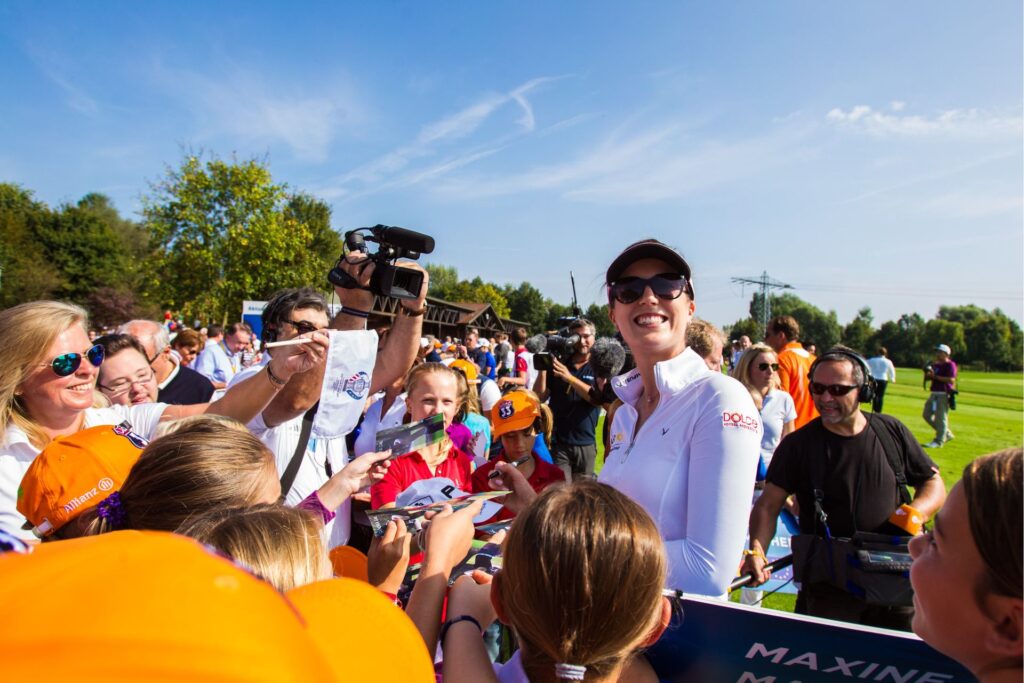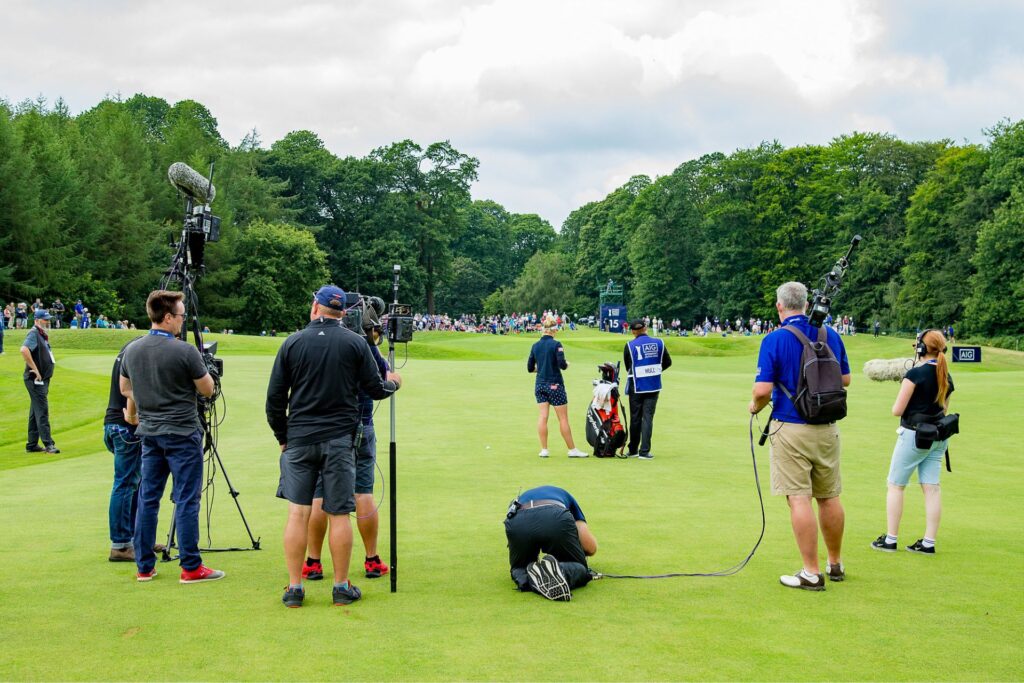This International Women’s Day, Charlotte explores whether better media coverage of women’s golf could drive participation, ambition, and change perceptions.
Women’s golf might have come a long way in the past few years, but does it really get the exposure it deserves? Compared to men’s golf, media coverage remains limited, and there’s no doubt that it’s holding back participation and perception of the game.
As we mark International Women’s Day and its theme of #AccelerateAction, it’s time to ask: Would better media coverage accelerate the growth of women’s golf? By showcasing the talent, skill, and stories of female golfers, we can drive change, inspire the next generation, and challenge outdated stereotypes.
If you can see it, you can be it
Women’s sport is in the middle of a revolution. The rise in visibility of female athletes across various sports has led to increased participation, sponsorship, and cultural impact. But when it comes to women’s golf, there’s still a gap. Would better TV and media coverage be the catalyst to accelerate progress?
It’s well-documented that media exposure directly influences sports participation. The more we see women playing golf at the highest level, the more accessible and aspirational the sport becomes. Increased coverage not only showcases role models but also challenges the perception that golf is reserved for a certain demographic.
It sounds obvious, but it’s the whole idea that if you can see it, you can be it.
As part of our recent Levelling the Fairways series, we surveyed nearly 400 women to identify the biggest challenges in women’s golf. 10% cited the lack of media coverage as a major barrier to participation. This reinforces a crucial issue: Young girls and aspiring golfers need to see women competing at an elite level to believe they can follow the same path.
Encouragingly, research from the Women’s Sports Trust suggests that brand investment and sponsorship in women’s golf are on the rise. With increased financial backing, there’s a real opportunity for media coverage to grow — and with it, the future of the women’s game.
The visibility gap
I know this isn’t an issue that is unique to golf – most mainstream sports media is still heavily male-dominated. And while progress has been made, men’s golf continues to take centre stage. Women’s golf events often receive limited live coverage, fewer primetime slots, and less overall investment in storytelling and analysis.
And that matters because visibility creates opportunity. When women’s golf is televised and promoted, it not only inspires young girls to take up the sport, but also shifts perceptions about who plays golf and what success in the game looks like.

More than just participation
A lot of women’s golf initiatives and programmes focus primarily on participation — getting women and girls to pick up a club. While this is essential, it’s not the full picture. More media coverage could help drive ambition beyond just ‘having a go’ and towards striving for excellence.
Anecdotally, it feels like many women’s initiatives focus on inclusion at the grassroots level but don’t necessarily emphasise skill development or pathways to elite competition. Increased visibility of elite female golfers would change that. If more women’s golf events were broadcasted, analysed, and given the same depth of coverage as men’s events, we might see more young girls aiming for professional careers in golf rather than just casual participation or dropping out of the game as they reach their teens.
Changing perceptions of female golfers
Golf has long struggled with stereotypes — many of which still persist today. For decades, the game has been perceived as a male-dominated sport, often exclusive and elitist. However, the face of golf is changing, and the media has the power to accelerate this transformation.
When women’s golf is showcased effectively, it challenges outdated perceptions. It demonstrates that female golfers are elite athletes with skill, strategy, and power. More coverage means more opportunities to highlight their stories, celebrate their achievements, and grow their fan base.
What needs to change?
- More live coverage: Women’s tournaments should have the same access to prime viewing slots as men’s.
- Greater investment from sponsors: Research shows that investment in women’s sports yields high engagement — brands should take note and allocate more resources.
- Elevated storytelling: Women’s golf needs more in-depth analysis, player profiles, and human-interest stories to connect with audiences.
- Commitment from broadcasters: Media organisations must actively promote and prioritise women’s golf to drive long-term impact.
International Women’s Day: #AccelerateAction
International Women’s Day is all about taking action. In golf, a crucial part of that is better media representation.
For the next generation of female golfers to dream bigger, aim higher, and truly believe that they belong in the sport, they need to see women’s golf on their screens, in their news feeds, and in the conversations that shape the future of sports.
It’s time to accelerate action. And that starts with giving women’s golf the coverage it deserves.
Read next: International Women’s Day: Suzann Pettersen on how VOXA is changing the game >










